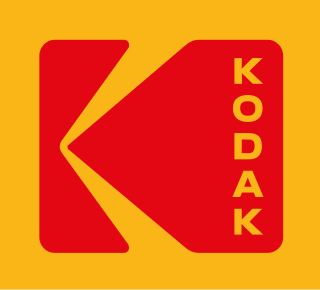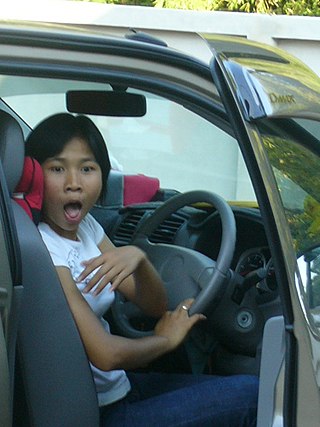Background
Eastman's first camera, the Detective, was created in 1886. Only 50 were made, and did not sell well. Soon after in 1888, Eastman created a superior model, the Eastman Kodak camera to replace his poorly selling Detective. The Kodak inspired the slogan "You Press the Button, We Do the Rest." Eastman wrote the owner's manual for the Kodak, although he originally hired an advertising expert to do the job. Displeased with the man's inability to understand the simplicity of his picture-taking machine, Eastman took over the writing and created the slogan. [1]
Part of Eastman's success was his business sense, which allowed him to see the potential in photography for amateurs. Eastman believed that amateur picture taking could eventually interest just about everyone, and in order to make it happen, he set about separating the two main functions of photography: the picture taking and the processing. For Eastman, 'We Do the Rest' was literally true. Customers had to simply take their pictures, send their camera to the Kodak factory in Rochester New York. At the Kodak factory, film was separated from the camera, cut into strips of twelve exposures, developed and stripped, pressed in contact with a clear gelatin skin, and dried. Then, prints were made from each negative and pasted on mounts and returned to customers, along with the negatives, the camera, and a new roll of film. [2]

The Eastman Kodak Company, referred to simply as Kodak, is an American public company that produces various products related to its historic basis in film photography. The company is headquartered in Rochester, New York, and is incorporated in New Jersey. It is best known for photographic film products, which it brought to a mass market for the first time.
The following list comprises significant milestones in the development of photography technology.

George Eastman was an American entrepreneur who founded the Eastman Kodak Company and helped to bring the photographic use of roll film into the mainstream. After a decade of experiments in photography, he patented and sold a roll film camera, making amateur photography accessible to the general public for the first time. Working as the treasurer and later president of Kodak, he oversaw the expansion of the company and the film industry.

A box camera is a simple type of camera, the most common form being a cardboard or plastic box with a lens in one end and film at the other. They were sold in large numbers during the late 19th and early 20th centuries. The lenses are often single element designs meniscus fixed focus lens, or in better quality box cameras a doublet lens with minimal possible adjustments to the aperture or shutter speeds. Because of the inability to adjust focus, the small lens aperture and the low sensitivity of the sensitive materials available, these cameras work best in brightly lit day-lit scenes when the subject is within the hyperfocal distance for the lens and of subjects that move little during the exposure. Eventually, box cameras with photographic flash, shutter and aperture adjustment were introduced, allowing indoor photos.

The Brownie was a series of camera models made by Eastman Kodak and first released in 1900.

Kodachrome is the brand name for a color reversal film introduced by Eastman Kodak in 1935. It was one of the first successful color materials and was used for both cinematography and still photography. For many years, Kodachrome was widely used for professional color photography, especially for images intended for publication in print media.

Pictorialism is an international style and aesthetic movement that dominated photography during the later 19th and early 20th centuries. There is no standard definition of the term, but in general it refers to a style in which the photographer has somehow manipulated what would otherwise be a straightforward photograph as a means of creating an image rather than simply recording it. Typically, a pictorial photograph appears to lack a sharp focus, is printed in one or more colors other than black-and-white and may have visible brush strokes or other manipulation of the surface. For the pictorialist, a photograph, like a painting, drawing or engraving, was a way of projecting an emotional intent into the viewer's realm of imagination.

In photography, reversal film or slide film is a type of photographic film that produces a positive image on a transparent base. Instead of negatives and prints, reversal film is processed to produce transparencies or diapositives. Reversal film is produced in various sizes, from 35 mm to roll film to 8×10 inch sheet film.

A snapshot is a photograph that is "shot" spontaneously and quickly, most often without artistic or journalistic intent and usually made with a relatively cheap and compact camera.

Kodak EasyShare was a sub-brand of Eastman Kodak Company products identifying a consumer photography system of digital cameras, snapshot thermal printers, snapshot thermal printer docks, all-in-one inkjet printers, accessories, camera docks, software, and online print services. The brand was introduced in 2001, and discontinued in 2012, when Kodak stopped manufacturing and selling all digital cameras and photo frames.

Patrick Demarchelier was a French fashion photographer.
A film base is a transparent substrate which acts as a support medium for the photosensitive emulsion that lies atop it. Despite the numerous layers and coatings associated with the emulsion layer, the base generally accounts for the vast majority of the thickness of any given film stock. Since the late 19th century, there have been three major types of film base in use: nitrate, acetate, and polyester.

Color motion picture film refers both to unexposed color photographic film in a format suitable for use in a motion picture camera, and to finished motion picture film, ready for use in a projector, which bears images in color.
The term "mass market" refers to a market for goods produced on a large scale for a significant number of end consumers. The mass market differs from the niche market in that the former focuses on consumers with a wide variety of backgrounds with no identifiable preferences and expectations in a large market segment. Traditionally, businesses reach out to the mass market with advertising messages through a variety of media including radio, TV, newspapers and the Web.

The Kodak DC series was Kodak's pioneering consumer-grade line of digital cameras; as distinct from their much more expensive professional Kodak DCS series. Cameras in the DC series were manufactured and sold during the mid-to-late 1990s and early 2000s. Some were branded as "Digital Science". Most of these early digital cameras supported RS-232 serial port connections because USB hardware was not widely available before 1998. Some models in the DC series ran on the short lived DigitaOS, a camera operating system that allowed third party software to be installed.
Go Greyhound and Leave the Driving to Us is the advertising slogan used by Greyhound Lines, Inc. starting in 1956. The tag line appears on the bus line's advertising- television commercials, billboards, magazine ads, and radio spots periodically for the next four decades. The slogan implies that by riding a Greyhound bus, one avoids the hassles of driving a car. It makes car travel seem less convenient than bus travel. The message confronts Greyhound travelers who own cars and have a choice, and those who do not. Because of the success of this advertising slogan, Greyhound continually returned to it many times in the years after it was introduced.
"I Want My Maypo" was an advertising slogan used by Maltex Company of Burlington, Vermont. It was used to advertise Maypo, a brand of maple flavored oatmeal starting in the 1950s.
The Kid in You is an advertising slogan developed for Kellogg's Frosted Mini-Wheats by the Leo Burnett Agency in the mid-1980s. The slogan was aimed at adults who were concerned with their perceived maturity but still wanted a sweet tasting children's cereal.
The practice and appreciation of photographyin the United States began in the 19th century, when various advances in the development of photography took place and after daguerreotype photography was introduced in France in 1839. The earliest commercialization of photography was made in the country when Alexander Walcott and John Johnson opened the first commercial portrait gallery in 1840. In 1866, the first color photograph was taken. Only in the 1880s, would photography expand to a mass audience with the first easy-to-use, lightweight Kodak camera, issued by George Eastman and his company.

The Kodak Panoram camera was a roll-film swing-lens panoramic camera made in Rochester, New York, USA by Eastman Kodak between 1899 and 1928.













